#Coloration Methods of Textile Material
Explore tagged Tumblr posts
Text
Word List: Fashion History
to try to include in your poem/story (pt. 2/3)
Exomis - a short, asymmetrical wrap garment pinned at the left shoulder, worn by men in Ancient Greece
Eye of Horus - or Wedjat eye, is an ancient Egyptian symbol that represents the eye of the falcon-headed god Horus and symbolizes healing and regeneration and was often worn for protection
Faience - a man-made ceramic material that was often used in ancient Egypt to make jewelry and devotional objects; it is usually a blue color
Falling Band - a flat and broad white collar often with lace on the edges, worn by men and women in the 17th century
Fibula - served as a pin to both hold garments together and to show status of those with prestige or power within society; was popular in Greek culture
Fichu - a triangular shawl, usually worn by women, draped over the shoulders and crossed or fastened in the front
Fontange - a linen cap with layers of lace and ribbon, worn flat and pinned to the back of the head
French Hood - a rounded headdress for women that was popular in the 16th century (from 1540)
Frock Coat - a collared man’s coat worn through the eighteenth to the twentieth century; rose to prominence mainly in the nineteenth century, especially Victorian England; characterized as a knee-length overcoat, buttoned down to the waist, that drapes over the lower half of the body like a skirt
Frogging - ornamental braid or cording that can function as a garment closure, or be solely decorative
Gabled Hood - a woman’s headdress that is wired to create a point at the top of the head and has fabric that drapes from the back of the head
Gigot Sleeve - a sleeve that was full at the shoulder and became tightly fitted to the wrist; also called leg-of-mutton sleeve
Guipure Lace - a type of continuous bobbin lace made without a mesh ground; its motifs are connected by bridges or plaits
Himation - a rectangular cloak wrapped around the body and thrown over the left shoulder worn by the ancient Greeks
Huipilli/Huipil - a woven rectangular shirt worn by women in Central America beginning in ancient times
Jerkin - a close-fitting men’s jacket, often worn for warmth, sometimes without sleeves; worn over a doublet in the 16th and 17th centuries
Justaucorps - a long-sleeved, knee-length coat worn by men after 1666 and throughout the 18th century
Kaftan - (also caftan) is an ancient garment, which originated in ancient Persia but then spread across Central and Western Asia; a kind of robe or tunic that was worn by both men and women
Katazome (stencil printing) - a traditional Japanese method for printing designs onto fabric using a stencil and paste-resist dyes
Kaunakes - one of the earliest forms of clothing; made from goat or sheep’s wool and meant to be worn around the waist like a skirt, it is recognizable by its fringe detailing
Kente - a Ghanaian strip woven textile that has striped patterns and bright colors with corresponding meanings
Knickerbockers - or “knickers” are full or baggy trousers gathered at the knee or just below and usually fastened with either a button or buckle; were initially worn by men in the late 19th century and gradually became part of women’s fashion; the garment was usually worn as sportswear and became especially popular among golfers and female cyclists, hence the term “pedal pushers”
Kohl - a black material made out of minerals such as galena and used for eyeliner and eye protection in ancient Egypt
Labret - a type of lip-piercing worn by various cultures to indicate wealth, prosperity and beauty
Love Lock - a lock of hair from the nape of the neck hanging over the chest to show romantic attachment; it was a popular hairstyle between 1590-1650
Lurex - a shiny synthetic fiber made of aluminum-coated plastic with a glittering metallic sheen
Mantua - a jacket-like bodice with pulled back overskirt that bustled in the back, often in elaborately patterned fabric, first worn in the 17th century
Medici Collar - a collar that stands upright on the back of the neck and opens in the front; this type of ruff was introduced to France by Marie de’ Medici in the 16th century, taking her name two centuries later
Moccasins - a type of soft animal skin shoe that were worn by Indians in North America
Muff - a tubular padded covering of fur or fabric, into which both hands are placed for warmth
Mule - a backless shoe
Muslin - a simple plain-weave textile made out of cotton and available in varying weights and finishes; historically, there were also varieties of muslin in silk and wool
Needle Lace -often known as “needlepoint lace”; is a term referring to the technique in which the lace is made of entirely needle work; it developed in the 15th century and then became very popular throughout the 16th century
Nemes Headdress - starched, striped linen headdress that draped on the shoulders and had a tail at center back worn only by royals in ancient Egypt
Panes/Paning - a method of decoration using long parallel strips of fabric arranged to reveal a contrasting fabric underneath that was fashionable from the 15th-17th centuries
Panniers - an under-structure used in eighteenth-century fashion that created a shape wide at the sides and flat at the front and back
Pantalettes - (also referred to as pantaloons) are loose, pants-like undergarments that covered women’s lower halves in the late 18th and early 19th century
Particolored - the combination of different colors within the same garment along the vertical axis
Passementerie - an additional accent or embellishment in silk or metallic threads, such as an embroidered braid, tassel or fringe
Pattens - wooden-soled platform over-shoes, which were commonly worn from the 14th century to the 18th century
If any of these words make their way into your next poem/story, please tag me, or leave a link in the replies. I would love to read them!
More: Fashion History ⚜ Word Lists
#word list#writeblr#spilled ink#dark academia#terminology#fashion history#history#words#studyblr#linguistics#writing prompt#fashion#writers on tumblr#poetry#literature#poets on tumblr#lit#culture#light academia#langblr#fiction#worldbuilding#creative writing#writing tips#writing advice#writing reference#writing resources
211 notes
·
View notes
Text
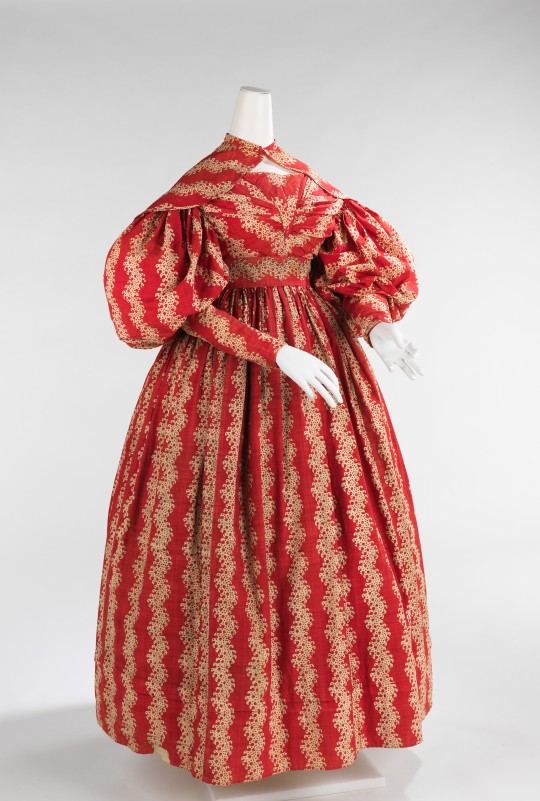
Dress
1830s
The Metropolitan Museum of Art
The 1830s are the 1970s of the 19th century. Fashion was big and over-the-top and often gets maligned as the ugliest decade of the century, but I love the camp of it.
"This transitional style indicates the aesthetic of its period. The large gigot sleeves were popular from the early 1830s through 1836 when they began to diminish to the tightly fitted sleeves of the following period. This type of sleeve was generally supported by whalebone or down filling. Another indication of its transitional disposition is the waist height and the full bell-shaped skirts. The rich color and lively pattern is engaging and in line with the mode of the day.
The female silhouette of the middle of the 19th century consisted of a fitted corseted bodice and wide full skirts. The conical skirts developed between the 1830s, when the high waist of the Empire silhouette was lowered and the skirts became more bell shaped, to the late 1860s, when the fullness of the skirts were pulled to the back and the bustle developed. The flared skirts of the period gradually increased in size throughout and were supported by a number of methods. Originally support came from multiple layers of petticoats which, due to weight and discomfort, were supplanted by underskirts comprised of graduated hoops made from materials such as baleen, cane and metal. The fashions during this time allowed the textiles to stand out because of the vast surface areas of the skirt and a relatively minimal amount of excess trim."
236 notes
·
View notes
Text
Nobody wants to hear it but you really need to start paying attention to care instructions on clothes and taking care to wash them properly.
A 80 years ago clothing was expensive and hard to make, that separating colors, materials, etc was imperative to keep them in the best condition.
In the past decade or two we've lost this knowledge.
This can be attributed, in my opinion, to advances in textile and detergent technology that caused less damage to our clothes with the default washing and drying method.
Now, we've looped to the other extreme, where clothes are mass produced so cheaply that any mistake in washing them will cause them to shred and wear faster. Fabric is thinner, dyes are less steadfast, elastic is cheaper.
People need to start taking care of their clothes again. and its a sign of how capitalism is "working" that I think gets overlooked entirely.
52 notes
·
View notes
Text
In a leap forward for materials science, a multi-institutional team of researchers has developed a pioneering method of 3D printing cholesteric liquid crystal elastomers (CLCEs), enabling complex, color-changing responsive materials and paving the way for novel applications like smart textiles and advanced robotics. Using a cutting-edge method known as Coaxial Direct Ink Writing (DIW), the team of engineers and scientists from the University of Pennsylvania (Penn), Harvard University and Lawrence Livermore National Laboratory (LLNL) invented 3D-printed, multi-stable structures capable of changing colors in response to stress, with a goal of combining the unique materials and techniques to help redefine smart materials. The research was published in the journal Advanced Materials.
Continue Reading.
46 notes
·
View notes
Text
Introducing: Silk Woman.
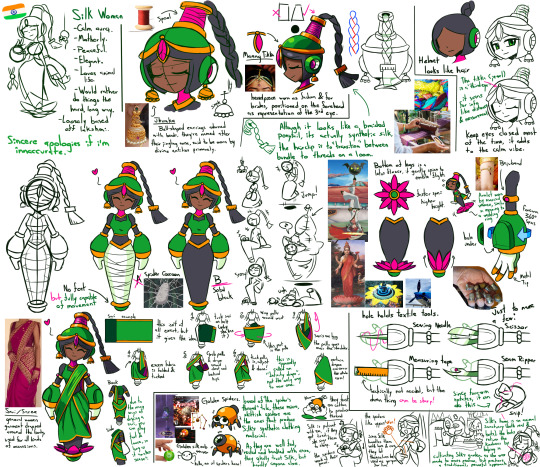
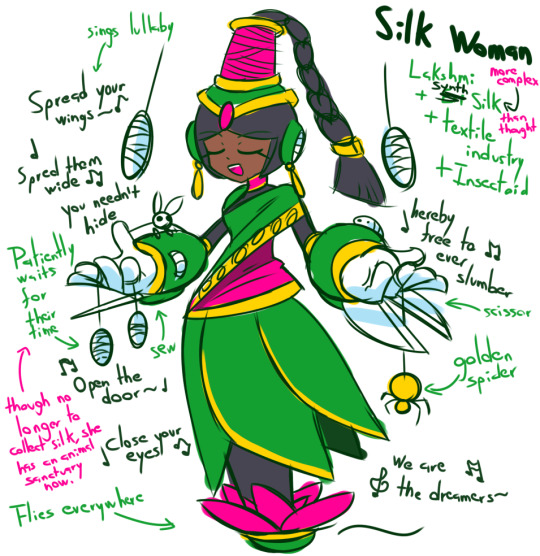


A Robot Master from India, developed for the intent of crafting and mass producing clothes of the finest quality and prettiest design to the higest bidder.
Loosely based off Lakshmi, this gal was built to embody beauty, feminity and fortune, the last of which would come as a result of her work being made of the best genuine silk her patron corporation could acquire.
However, given her personality being that of a saint and her enormous compassion, once she learned of the process that went into adquiring real silk as fast as possible, she rebelled against the corporation that built her, and a robot that wasn't gonna comply would no longer be useful, so she was quickly discarded soon after.
Abandoned at the scrapyard, she was at a loss of what to do since she was stripped of the silk that had given her name and had no real method of getting out in the world on her own.
Fortune would soon smile upon her, however, as she soon discovered a tiny insect scuttering about on the scrapyard and saved it from nearly getting crushed by the rubble of the place, as it would have it, this little insect was a tiny mechanical golden spider.
As it happens, these golden spiders were companions to hobbyist in the textile arts, made to produce synthetic thread in various colors as long as they were provided the materials for it. However, these models were easily disposable if the hobbyist ran out of materials or merely didn't want to continue their lost passion.
This little spider was thankful for the kindness Silk had shown, and as if it could talk, it led her to more of its kind, who had various amounts of left-over silk within them.
With the help of the spiders, she was led out of the scrapyard and safely escaped a grim demise at the hands of crushers or trash melters. Though she had little to her name, she did had the skills to sew, and the thankful spiders would gladly provide what they had.
The group would soon find a place where they could prepare and sell their wares, though given the mass produced tools she had the people did not trust her as she was seen as a machine and not as a crafter, soon would she decide to switch her methods and learn the trade once more on her own, with no tricks to speed up the process.
It was a hard time, and the thread of the spiders was running out (and not a dime to feed them as they needed to be), it seemed to be over for the seamstress… until fortune shone on her once more.
A young couple this time, poor but deeply in love, they came in looking for wares they could use for their wedding and the other stablishements had rejected them for they couldn't pay the higher price. Feeling pity on them, Silk lended them her finest wares for almost free (the couple insisted on paying back what they could, and the spiders hungered for the flowers they needed to produce once more).
It took some days and Silk didn't had much time to keep her business afloat, but soon did she hear that the wedding was filled with love and amazement, with the wife presuming and praising the clothes she had acquired. Soon did word of mouth spread and little by little Silk acquired more and more clientelle who were happy with her wares.
Over time, Silk acquired a fortune and fame for the clothes she and the spiders produced, using her money not in frivolous jewels but in creating a lush garden, where she could grow flowers and trees that would help feed the spiders. This garden attracted lost animals -both of the robotic and living kinds- and were invited to stay as long as they pleased, some even providing help to tend to the flowers of the garden.
Today, Silk's business has grown to be recognized across various countries. Although slow to produce as she's a single woman doing the work, her textile works now fetch a good amount of money, though even today she freely donates her most elegant wares to couples soon to be married if their love rings true in their hearts.
-----
Silk here is a creation to go along with the rest of the robots that I have created thus far, by sheer accident I have been doing a worldwide theme with the end result being almost an echo of MegaMan 6 as each one of my robots would match a country seen in that game (or, well, almost. I have to represent my homeland of México, you know, close enough to Brazil).
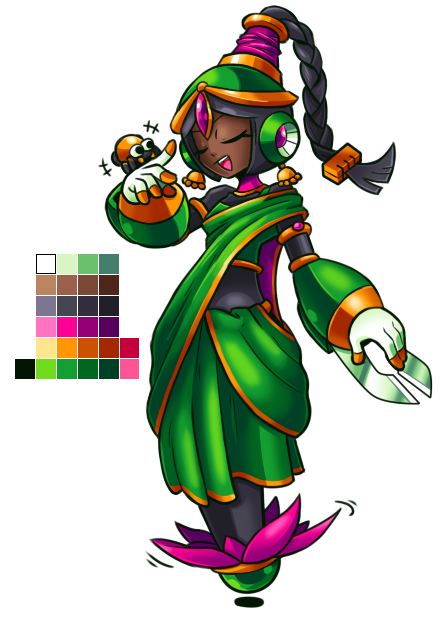

Out of the ones I needed to make, the middle east was the one I needed to represent at this point, so I landed on making one based off the idea of the textile works of India as well as loosely basing her off Lakshmi and other various middle eastern themes. Hope I got her right and sincere apologies if I got something wrong.
Thus, I now have 9 robots, one for each country in MegaMan 6!
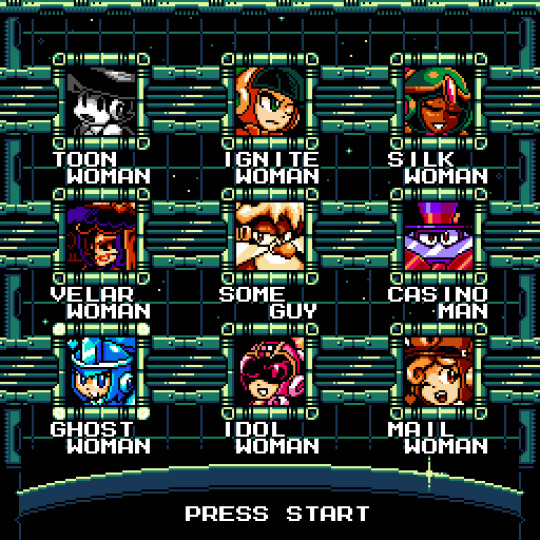
…Though one of them may not be exactly happy about it.
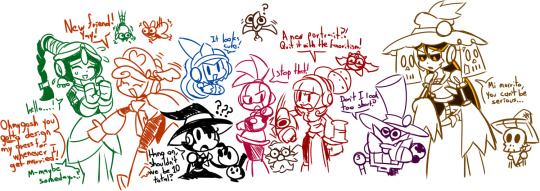


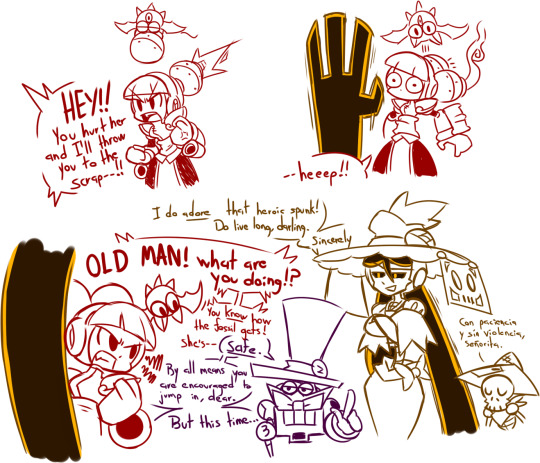
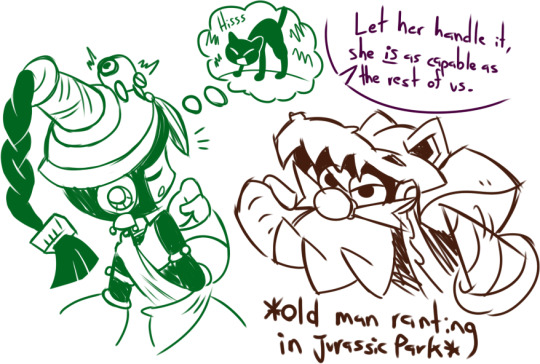
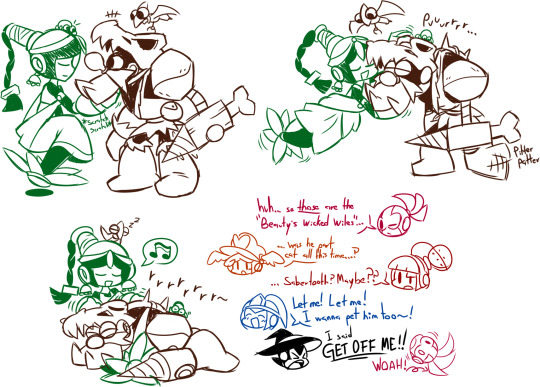
...Don't worry, Cave isn't getting demoted or replaced, its all just for show! He's just as valued as the others.
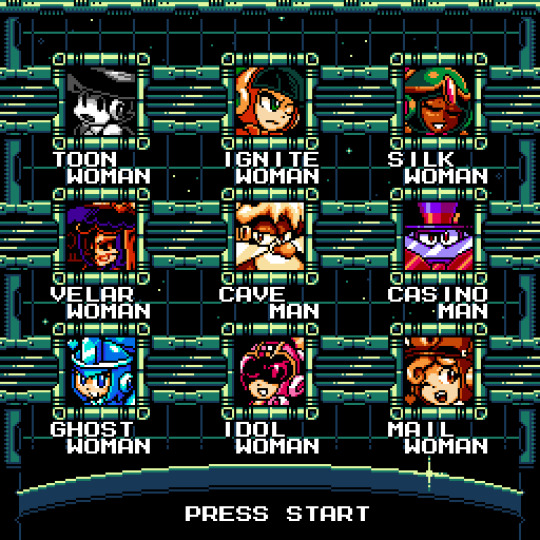
#Art#Open Commissions#Robot Master#Mega Man#Rock Man#OC#Original Character#Comic#Character Design#Pixel Art
31 notes
·
View notes
Text

3D printing method creates color-changing materials for smart textiles
In a leap forward for materials science, a multi-institutional team of researchers has developed a pioneering method of 3D printing cholesteric liquid crystal elastomers (CLCEs), enabling complex, color-changing responsive materials and paving the way for novel applications like smart textiles and advanced robotics. Using a cutting-edge method known as Coaxial Direct Ink Writing (DIW), the team of engineers and scientists from the University of Pennsylvania (Penn), Harvard University and Lawrence Livermore National Laboratory (LLNL) invented 3D-printed, multi-stable structures capable of changing colors in response to stress, with a goal of combining the unique materials and techniques to help redefine smart materials. The research was published in the journal Advanced Materials.
Read more.
#Materials Science#Science#3D printing#Textiles#Color#Liquid crystals#Liquid crystal elastomers#Elastomers
16 notes
·
View notes
Text
prefacing this with I'm not necessarily punk, but I like customizing my clothes. and i wanna help other people find stuff for battle jackets! (and other stuff) I'm not the authority on this, but I still want to give my two cents!! also don't expect much more to this, my profile is pure cringe.
If anyone is starting out and I can help, I'd like too!!
The spike/stud dilemma
one of the biggest issues i've noticed is "where do I find studs/spikes without fast fashion??" which is totally fair. something like that shouldn't have to be a minefield. obviously if you buy from a small business that re-sells them from aliexpress you're still indirectly supporting aliexpress.
im sure there ARE slow fashion alternatives and if anyone knows some please let me know so I can add it!!
BUT here's what I'd recommend.
-goodwill bins, sometimes they have old clothes or broken belts, very rare though. also any thrift store or reclaimed craft store.
-Local businesses, sex shops
-metal paper fasteners
-borrowing. it's inevitable, I know. JOANNs is definitely the best selection imo, but Hobby Lobby is better to steal from. Because They are Terrible. Michael's is OK but less selection usually. They use peal off tags usually which are easy to remove.
-also if you're feeling extra insane, hot topic uses mainly ink tags, which can be removed with heat (look up tutorials on) or just cut off a stud/spike belt. their studs are pretty easy to remove. same with bracelets, they break a lot. ofc it depends on the place whether they use beep beep tags.
-ask people for broken shit!
TEXTILES (the easy part)
-fabric samples are easy to find for free online. get whatever colors you want, i usually stick to black, white, grey and 1-3 other colors. they're usually pretty small so order around until you find the right size. you want cotton and linen, usually upholstery if you're painting on them. if you're not or you're ok working with leather, leather is easy to find too. A lot of companies mentioned how stretchy your material is something not stretchy most cases.
-FACEBOOK!! A.K.A the boomer method. This is where I got almost all of mine!! I recommend downloading FREEBIE as well! I got mine thru that, it links to facebook, nextdoor, and so on. Ofc you can pay for them- but you don't have to! I have lifetime supply of textiles basically bc of this. A lot of people get them for hobbies or work.
-the goodwill bins!!!! you can absolutely find fabric there, it's pretty common actually
-you don't need to steal this tbh it's easy to find second hand and less wasteful
PAINTING
-Facebook, goodwill, or reclaimed/used craft stores if you have them
-borrowing (same places)
-use something like Painter Eye (AR tracing app) and draw out any complex band logos etc.
-you can also use sharpies or whatever nobody's stopping you
Other stuff
-one of the best ways to find stuff is just GO FOR A WALK! Find little shiny objects!
-hardware stores are good so are army surplus
105 notes
·
View notes
Text
Cosmic's Malleyuu Whump vs Flufftober: Day 19
abandoned cabin / Yarn

The wood creaked as fibers ran through the spinning wheel.
Malleus was always entranced whenever his grandmother wove. There was something hypnotic about whiling the hours away with one singular goal.
With the approaching frontier of technology, advancements being made seemingly as fast as Malleus could grow new teeth, textiles in all colors and shapes had become more commonplace.
He believed that was largely a good thing. The material comforts he often took for granted deserved to be proliferated among the masses.
For the House of Draconi, however, the act of spinning would likely be buried with them.
Black Scale Castle was lined with the efforts of his ancestors. Wedding tapestries, baby blankets, ornately embroidered frocks, even sets of pillowcases.
The majority was kept in the family vaults, as it was too large a collection to keep constantly on display, but at least one piece from every reign decorated Black Scale.
He knew his mother hadn’t made much in her short time. On the advice of several of the records of previous rulers, she had stayed her hand during her and his father’s courting phase, believing she had a whole lifetime to make him and his father more.
She’d been in the middle of a large rug that would have gone in his nursery at the time of her passing. The rug, loose threads and all, had been framed and hung in there instead.
“Before long,” spoke his grandmother, hands never straying from the spindle, “but hopefully not too soon, you will begin your own work.”
She continued. “Though you will decide for yourself what method, I feel it is important for you to know every step in this process. Do you know why?”
“No,” answered Malleus.
“It is because you must learn to appreciate the work that goes into love, and into a successful relationship.“
She adjusted something on the wheel before contributing. “Love, with the right person, can feel magical. Complacency in its source will cause the fountain to run dry.”
Malleus nodded, but he didn’t fully understand. “Who is this for?”
“This yarn shall be for you. I will teach you spinning later, but for now, we will start with knitting and crochet. You will make yourself a hat and gloves for winter.”
She patted her lap. “Come. Observe me closely.”
Malleus climbed up onto her lap, happy to be surrounded by his grandmother.
—
“So this is where you went.”
Malleus turned around to see Yuu in the doorway.
Members of Night Raven’s student body were on a field trip to the Briar Valley, to observe the Welcoming of Spring, and Malleus had generously lent them use of one of the many properties his family owned, this one a cozy cabin farther away from the bigger cities.
“Ah, I apologize,” he said, putting down his work. Being a good host was draining, but he’d had enough of a break.
“Oh, don’t worry about it,” said Yuu, waving it off. “We were just setting up a board game. Wanna be on my team?”
Malleus took one last glance at his work to make sure he’d remember where he left off- a grey scarf, the same silvery grey Yuu often favored- and placed it to his side.
“I would love to,” he said, tongue curling around the word as the corners of his mouth rose as if by magic.
#cosmic whump vs fluff 2024#malleyuu#malleus x yuu#malleus x reader#malleus draconia#twst yuu#abandoned cabin#yarn
24 notes
·
View notes
Text
Dyes : The World of Colors
Colors make our world vibrant, and dyes are the magical ingredients that bring life to everything around us. Let’s explore the colorful universe of dyes, breaking down the various types and their fascinating uses in everyday life.
Understanding Dyes:
Dyes are like special paints that add color to different things. Humans have been fascinated by colors for a long time, and dyes play a huge role in making our world colorful. There are two main types of dyes: natural and synthetic. They are used to add color to items like utensils, textiles, leather products, and even food.
Types of Dyes:
Basic Dyes:
These dyes are made in labs and give really bright colors. They are great for adding color to things like acrylic fibers and synthetic materials.
Direct Dyes:
These dyes dissolve in water and are used for coloring materials like cotton. They are commonly used in the textile industry.
Natural dyes :
Natural dyes are derived from sources in nature and may include substances like indigo, turmeric, or cochineal. While these dyes have a historical and cultural significance, they often present limitations in terms of color range and fastness.
Acid Dyes:
Perfect for coloring protein fibers like wool and silk, acid dyes are highly soluble in water. They are not suitable for materials like cotton but work well for leather and medical products.
Synthetic Dyes:
Man-made and chemically produced, these dyes come in a wide range of colors. They are used in many industries due to being affordable, but they can be harmful to the environment and humans.
Reactive Dyes:
Best for cellulose, protein, and polyamide fibers, these dyes are easy to use and have good light-fastness properties. They are popular in the textile industry.
Solvent Dyes:
Modern and non-toxic, these dyes are used in upcoming textile mills. They are convenient but may be more expensive. Solvent dyes are seen as alternatives to traditional harmful dyes.
Food Dyes:
Added to food to make it look attractive, food dyes come in various forms. It’s important to use them carefully as excessive consumption can lead to health problems. They are either natural or artificial.
Application of Dyes:
Textiles: Dyes are extensively used in the textile industry to color fabrics, clothing, and other textile products. They can be applied through various methods such as dyeing, printing, or painting.
Plastics: Dyes enhance the appearance of plastic products, providing them with a wide range of colors and finishes.
Printing: Inks, whether for traditional printing or modern digital printing, often contain dyes to produce vibrant and accurate colors.
Food: Food dyes are used to add color to various food products, making them visually appealing. These dyes can be natural or synthetic.
Industrial Use: Dyes find applications in various industrial processes, including coloring materials like leather, creating inks for pens and printers, and contributing to the production of a wide array of products.
17 notes
·
View notes
Text
Unlocking the Magic of Custom Cotton Muslin Fabric: Versatile, Sustainable, and Chic

If you're a creator, designer, or DIY enthusiast, you've likely stumbled across custom cotton muslin fabric in your search for the perfect material. This humble textile is having a major moment, and for good reason. Its lightweight, breathable, and endlessly adaptable nature makes it a go-to for everything from fashion to home décor. But what exactly makes muslin so magical? Let's dive into why this fabric is a game-changer, blending versatility, sustainability, and a chic edge that's impossible to ignore.
The Versatility of Muslin Printed Fabric
Muslin's charm lies in its ability to be anything you want it to be. Whether you are crafting flowy dresses, cozy quilts, or statement curtains, muslin printed fabric offers a soft, slightly textured canvas that holds color beautifully. Its natural weave gives designs a rustic yet refined look, perfect for both minimalist and bold aesthetics. At Prinstitch, we've seen creators transform muslin into everything from baby swaddles to artisanal tote bags, proving its unmatched flexibility. The fabric's open weave also makes it ideal for layering, draping, or even experimental dyeing techniques, giving you endless creative freedom.
Sustainability Meets Style
In a world increasingly focused on eco-conscious choices, muslin stands out as a sustainable superstar. Made from natural cotton, custom cotton muslin fabric is biodegradable and often sourced from renewable crops. Its production requires less water and energy compared to synthetic fabrics, making it a favorite for environmentally minded designers. Plus, muslin's durability means your creations last, reducing the need for fast fashion or disposable décor. By choosing muslin, you're not just crafting something beautiful - you're making a statement about sustainability without sacrificing style.
The Rise of Digital Printed Muslin Fabric
One of the most exciting developments in muslin's modern renaissance is digital printed muslin fabric. This cutting-edge technology allows for vibrant, high-resolution designs that bring your vision to life with stunning precision. Unlike traditional printing methods, digital printing offers limitless color palettes and intricate patterns, from florals to geometric abstracts. It's perfect for small-batch projects or one-of-a-kind pieces, as it eliminates the need for costly setups. Whether you are a designer launching a capsule collection or a hobbyist creating custom gifts, digital printing on muslin elevates your work to professional levels.
Mastering Print Design on Fabric
The key to unlocking muslin's potential lies in thoughtful print design on fabric. A well-chosen design can transform a simple piece of muslin into a showstopper. Think bold botanical motifs for summer dresses or subtle textures for throw pillows. The beauty of muslin is its ability to let prints shine without overwhelming the senses. For those looking to scale their projects, custom fabric printing wholesale options make it easy to access high-quality muslin in bulk, ensuring consistency across larger collections.
Why Muslin Is Your Next Must-Have
So, why should you add custom printed cotton muslin fabric to your creative arsenal? It's versatile enough to suit any project, sustainable enough to align with eco-conscious values, and chic enough to make a statement. Its light feel, combined with the endless possibilities for printing designs on it, makes it a fabric that is both practical and inspiring. Ready to unlock its magic? Your next masterpiece is just one step away.
2 notes
·
View notes
Text
Top Trends in Digital Textile Printing for 2025
Digital textile printing continues to revolutionize the textile industry, offering unmatched precision, customization, and speed. As we step into 2025, True Colors Group is at the forefront of innovation, ensuring businesses stay ahead of the curve. Here are the top trends shaping the future of digital textile printing.

Sustainability Takes Center Stage
Environmental concerns are driving the adoption of sustainable practices across industries, and textile printing is no exception. Digital textile printing significantly reduces water and energy usage compared to traditional methods, making it a preferred choice for eco-conscious businesses. True Colors Group emphasizes sustainability by using advanced printing machines that minimize waste while delivering vibrant, high-quality results.
Enhanced Print Speeds and Precision
Advancements in printing machine technology have led to faster production times without compromising quality. In 2025, expect to see digital textile printing machines equipped with AI-driven features that ensure flawless precision and consistent results, even for large-scale production runs. These developments empower businesses to meet growing demand while maintaining impeccable standards.
Rise of Customization and Personalization
Consumers increasingly seek unique, personalized products, and digital textile printing is the perfect solution. From custom apparel to personalized home décor, businesses can use digital technology to create bespoke designs with ease. True Colors Group leverages this trend by providing cutting-edge sublimation printing options that cater to diverse customer needs.

Integration of Smart Technologies
Smart technologies, including IoT and AI, are transforming how printing machines operate. These innovations enable real-time monitoring, predictive maintenance, and seamless workflow integration, reducing downtime and enhancing efficiency. True Colors Group stays ahead by adopting smart textile printing solutions that ensure optimal performance and customer satisfaction.
Expanding Applications in Fashion and Beyond
While fashion remains a primary focus for digital textile printing, new applications are emerging in sectors like interior design, automotive, and sportswear. Sublimation printing is particularly popular for creating durable, high-quality prints on a variety of materials, including polyester and blended fabrics.

In 2025, True Colors Group continues to push boundaries in digital textile printing, offering businesses the tools and expertise needed to succeed in a competitive market. By embracing these trends, companies can unlock new opportunities and deliver exceptional value to their customers.
2 notes
·
View notes
Text
youtube
#ecoprint #naturaldye #bundlesecoprint
The Secret of Ecoprint Technique (Full Tutorial) Part 1 • The Secret Recipe of E...
The Secret of Ecoprint Technique (Full Tutorial) Part 2 • The Secret of Ecoprint...
So hi, im roman, FINALLY todays video id like to show you the secret recipe how i made ecoprint on fabric, how i create a beautifull print on it, a secret why and how the leave or the flower leave their shape beautifully, this is base on my exploration, maybe the weather, ph level of water and so many factor will affect the result, but you can try this recipe.
This video is maybe long, but i dont want to cut the video so i will show you every step of the process of the textile making.
Step by step :
1. Choose the best fabric/materials
2. Clean the fabric (Scouring), i have 2 ways to clean deeply the fabric (2 method)
3. Preparing the fabric (Mordanting), 2 step to make your fabric is ready to dye.
4. Selection of the plants.
5. Bundles and Steam Technique.
6. I love you.
1. Fabric / Materials
The first is the most important before you making natural dyes, selection of fabric or material, because we work on natural dyes, natural things, so make sure the fabric that u ll be use is from nature also, like linen, cotton, or maybe silk.
2. Scouring
The second, is to scoured the fabric, what is scouring means? Scouring refers to thoroughly washing or deep cleaning the fabric, to remove residue or residual chemicals on the cloth from the factory when fabric making.
This is one factor of success in achieving strong color on natural dyes, is to start with completely clean fabric. Does this mean fabric washed in washing machine? No! We think the washer gets our clothes totally clean but it honestly does not. That is why, to get a good even coverage with your dyes, it is very important that you deep clean your cellulose fabric such as cotton, linen, bamboo, or maybe silk.
For me, this is my method, i have 2 ways to scour the fabric, the first is boil the fabric on hot water with some soda ash about 20 minutes, or if you dont have a soda ash you can use any detergent, but i recomend a soda ash and TRO (Turkish Red Oil). Boil for 20 minutes and ready for the next step, but if you patient enoght i have another tips, another methos, that is leave your fabric on soda ash mix with water for about a night or a couple night, until the fabric is clean and dry it.
3. Mordant
The 3rd step, next for this step is to mordant the fabric, what is mordant means? Mordant is like to prepare your fabric for natural dyes, mordanting process make your fabric good enought to sticking the tanin (the substance in plants that produces color/natural dyes) from leaves and flower. More rich the tannins on a plant, more strong the color will be.
There is 2 step of mordanting the fabric,
Mordant First step, recipe (you can re-adjust composition) :
Aluminium Sulfate (Tawas)
Iron Sulfate (Tunjung)
Baking Soda
Vinegar
Mix all the ingredients with water
Dry the fabric.
Note : be careful with fragile fabric like silk, dont add too much recipe
Mordant Second step, recipe :
Calcium Carbonate (lime betle/kapur sirih)
Mix with water
Ready to print or you can dry it and keep for print when you need. (Make sure make it wet again the fabric before you print)
For the precise composition please follow and dm me on instagram / roman.muhtar ✨
4. Selection of Plant
More rich the tannin on a plant, more strong the color will be.
What i choose :
Hibiscus flower (Bunga sepatu)
Bidens pilosa (Dom dom an/babadotan)
Acalypha (Daun Ekor Kucing)
Vernonia (Daun Afrika)
And many more you can explore
5. Bundles Ecoprint
Here‘s tutorial • Bundle Ecoprint Tutori...
6. Thanks for watching, i love you!!!
Lets be friend
Lets be friend
/ roman.muhtar
/ romannuansa
my work https://msha.ke/boolao
#Roman Nuansa#solarpunk#how to#how to eco print#how to bundle dye#eco print#bundle dye#diy#do it yourself#natural materials#natural fabrics#natural dye#Youtube
9 notes
·
View notes
Text
BEST HOTEL INTERIOR DESIGN- Avivakeeon Interio

Innovative and Creative Hotel Interior Design with Avivakeeon Interio
Introduction to Avivakeeon Interio and Creative Hotel Interior Design
Avivakeeon Interio stands as a beacon of innovation in the realm of hotel interior design. Renowned for its visionary creativity, this company transforms spaces into masterpieces, elevating guest experiences to new heights. By blending contemporary trends with timeless elegance, AvivakeeonInterio creates environments that are both functional and aesthetically pleasing. Their design philosophy includes:
- Emphasizing sustainability without compromising style.
- Integrating cutting-edge technology seamlessly into interiors.
- Prioritizing comfort to enhance overall guest satisfaction.
These elements ensure that every design not only captivates visually but also enriches the hotel experience.
Key Elements of Innovating Hotel Interiors
In the competitive world of hospitality, creating a memorable experience for guests is paramount. Hotel interior design plays a critical role in achieving this goal, and innovation has become the cornerstone of successful design strategies. The key elements driving innovative hotel interiors include creativity, cultural integration, and the use of cutting-edge technology. These aspects not only enhance aesthetic appeal but also improve functionality and guest satisfaction.
Importance of Creativity in Hotel Design
Creativity is the lifeline of hotel design. It allows for the transformation of ordinary spaces into extraordinary experiences that enchant and engage guests from the moment they step into the lobby. Creative design goes beyond traditional methods, incorporating bold ideas and pushing the limits of what a hotel space can be.
- Visual Aesthetics: Utilizing unique color schemes, textures, and materials can evoke emotions and create distinctive atmospheres. This might mean using vibrant hues to inspire energy and excitement or soft tones to offer relaxation and calm.
- Functionality: Creative designs often rethink the function of a space. A traditional hotel lobby might be transformed into a multifunctional area with co-working spaces, lounges, and art installations to cater to a diverse clientele.
- Storytelling: Every design element has a purpose and contributes to the hotel's narrative. Through creative design, each area can tell a story that speaks to the hotel's brand and ethos, making the guest experience immersive and memorable.
Integrating Cultural Influences
Cultural influences offer a rich tapestry from which designers can draw inspiration. By integrating local culture into hotel interiors, designers can create spaces that are not only beautiful but also authentic and meaningful.
- Local Artisanship: Incorporating locally sourced materials and craftsmanship enhances the cultural connection and supports local communities. From handcrafted furniture to indigenous textiles, such elements add depth to the design.
- Heritage and Tradition: Paying homage to local history and traditions can be achieved through architectural styles and decorative details. For instance, a hotel might incorporate traditional motifs or patterns into its interior design to reflect the local heritage.
- Cultural Storytelling: Design can act as a medium to convey the stories and legends of the region. This could be manifested in the form of murals, sculptures, or curated exhibitions that educate and engage guests in the local culture.
Use of Technology and Smart Design
Incorporating technology in hotel design is no longer just an option; it's a necessity. With the rapid advancement of smart technology, modern hotels are embracing these innovations to enhance guest experience, improve operational efficiency, and create seamless interactions.
- Smart Rooms: Incorporating IoT (Internet of Things) technologies enables guests to control lighting, temperature, and even in-room entertainment systems through their smartphones or voice commands. This level of personalization enhances comfort and convenience.
- Virtual Check-In and Digital Concierge: Many hotels are adopting digital check-in processes that allow guests to bypass the front desk, using mobile devices for a hassle-free experience. Digital concierges provide instant information and assists guests via apps or interactive kiosks.
- Sustainable Technology: Smart design integrates with eco-friendly practices through energy-efficient lighting, climate control systems, and water-saving fixtures, reducing the environmental footprint and operational costs.
Unique Design Solutions by Avivakeeon Interio
Avivakeeon Interio stands at the forefront of innovativehotel design, crafting unique solutions that set new standards in the industry. Their commitment to sustainable designs, personalized interiors, and collaboration with artists leads to unrivaled interior environments that captivate guests worldwide.
Sustainable Design Practices
Sustainability is a driving force behind��AvivakeeonInterio’s design philosophy. Their approach prioritizes environmental responsibility without compromising on style or luxury.
- Eco-Friendly Materials: Using sustainable materials wherever possible—such as reclaimed wood, recycled glass, and low-VOC paints—ensures durability and reduces impact on the environment.
- Energy Efficiency: Implementing energy-efficient solutions like LED lighting, solar panels, and smart HVAC systems helps to minimize energy consumption and operational costs.
- Biophilic Design: By integrating natural elements into the indoor environment, such as plant walls or water features, Avivakeeon Interio promotes wellbeing and a connection to nature.
Customization and Personalization
One of Avivakeeon Interio's most praised attributes is their ability to deliver highly customized and personalized designs that resonate with the particular brand identity and guest expectations of each hotel.
- Bespoke Furniture: Custom-designed furniture pieces ensure that each space is unique and fits perfectly within the design narrative of the hotel. From tailored headboards to one-of-a-kind lounge seating, every detail is meticulously crafted.
- Personalized Guest Experiences: Understanding that every guest is different, Avivakeeon Interio incorporates elements that can be personalized, such as customizable lighting schemes or modular furniture that adapts for personal or business use.
- Adaptable Spaces: Designing multifunctional areas that can easily transform to suit different needs—be it a business event or a casual gathering—provides versatility and maximizes space utility.
Artistic Collaborations in Interiors
Avivakeeon Interio thrives on collaborations with artists from various disciplines to infuse creativity and originality into their hotel designs.
- Commissioned Artworks: Partnering with local and international artists to create exclusive artworks ensures that each hotel features unique pieces that contribute to its character and ambiance.
- Interactive Art Installations: These installations not only beautify spaces but engage guests, providing interactive experiences that align with the hotel's theme and narrative.
- Artistic Integration: From wall murals to sculptures, each artistic element is integrated thoughtfully into the design to complement and enhance the overall aesthetics of the hotel.
In conclusion, innovative and creative hotel interior designs provided by Avivakeeon Interio demonstrate the power of combining creativity, culture, technology, and collaboration to craft exceptional spaces that exceed guest expectations while promoting sustainability and artistic expression. These elements collectively contribute to reshaping the landscape of modern hospitality.
Case Studies of Successful Hotel Designs
When it comes to setting the bar in creative hotel interiordesign, Avivakeeon Interio continuously breaks new ground. By marrying functionality with aesthetics, they craft spaces that are not just visually captivating but also enhance the guest experience. Let’s delve into some case studies highlighting how Avivakeeon Interio's approach to hotel design innovation translates into reality.
The Urban Oasis: Riverside Hotel
Located in the heart of a bustling city, the Riverside Hotel exemplifies how a well-executed design can transform an entire hospitality experience. Avivakeeon Interio was tasked with creating a tranquil sanctuary amid urban chaos, and they rose to the occasion by emphasizing biophilic design principles.
- Incorporation of Natural Elements: From indoor gardens to water features strategically placed throughout common areas, the hotel immerses guests in nature despite its metropolitan location.
- Sustainable Materials: The use of reclaimed wood and recycled metals not only contributes to eco-friendliness but also adds warmth and texture to the interiors.
- Seamless Indoor-Outdoor Transition: With floor-to-ceiling windows and open terraces, the boundary between inside and out is blurred, allowing guests to enjoy cityscapes without the associated clamor.
The Historical Charm: The Old Manor Inn
Preserving history while incorporating modern comforts was no small feat at The Old Manor Inn. Avivakeeon Interio embraced the challenge, turning the hotel into a living time capsule enriched with contemporary touches.
- Restoration and Preservation: Original architectural features, such as crown moldings and vintage fireplaces, were carefully restored, maintaining historical integrity.
- Modern Amenities with Antique Aesthetics: Rooms are furnished with state-of-the-art technology seamlessly integrated within vintage-styled furnishings, offering guests both nostalgia and convenience.
- Thematic Storytelling: Each room tells a story, drawing from the building's history, with curated art pieces and narratives enhancing the guest experience.
The Tech Haven: Digital Inc. Hotel
With the rise of tech-savvy travelers, the Digital Inc. Hotel stands out as a beacon of futuristic hospitality design. AvivakeeonInterio’s innovative approach delivers a unique stay defined by cutting-edge technology and sleek design.
- Smart Room Technology: Guests enjoy automated room controls, from lighting to temperature, all managed via mobile apps or in-room tablets.
- Minimalist Design: The interiors follow a minimalist design philosophy, with clean lines and neutral palettes that serve as a backdrop for digital art displays.
- Interactive Spaces: The hotel boasts augmented reality features in common areas, allowing guests to engage with the surroundings in unprecedented ways.
These case studies illustrate Avivakeeon Interio’s prowess in creating unique interiors that resonate with the essence of each hotel's identity. By focusing on innovation and embracing a distinct design language, Avivakeeon Interio not only elevates the aesthetic appeal of their projects but also introduces new paradigms of guest engagement. Through such exemplary projects, they continue to set benchmarks in the field of hotel design innovation, proving that creativity and practicality can harmoniously coexist.
Conclusion and Future Trends in Hotel Design
As we wrap up our exploration of hotel design, it is evident that creativity and innovation are at the forefront. Avivakeeon Interio continues to push the boundaries with its imaginative designs and unique aesthetics, setting new standards in the hospitality industry.
Looking ahead, several future trends are poised to shape the world of hotel interiors:
- Sustainability: Eco-friendly materials and renewable energy sources will become integral in crafting responsible hotel spaces.
- Technology Integration: Smart rooms with digital controls for lighting, temperature, and entertainment will enhance guest experiences.
- Personalization: Customizable options for room decor and amenities will allow guests to tailor their stays to their preferences.
With these trends on the horizon, hotels are poised to become even more dynamic and engaging, offering guests distinctive and memorable experiences. Avivakeeon Interio remains at the helm, driving these innovations in hotel design.
2 notes
·
View notes
Text
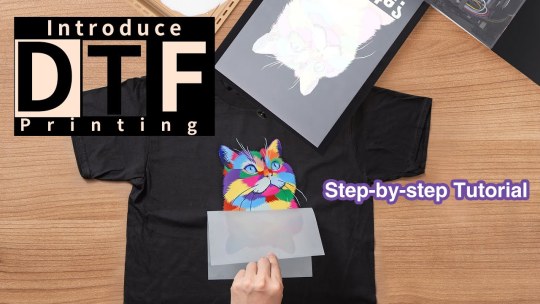
DTF Transfer Printing for Beginners: A Comprehensive Guide to Printing DTF Transfers at Home
As custom apparel and personalized items continue to gain popularity, creative enthusiasts are looking for efficient and affordable ways to produce high-quality prints from the comfort of their homes. Direct-to-Film (DTF) transfer printing has emerged as an accessible and versatile method for producing vibrant designs on various surfaces, especially textiles. DTF printing offers the advantage of application on a range of materials while maintaining exceptional color fidelity and detail. This article will introduce beginners to the DTF printers printing process, the equipment and materials needed, step-by-step instructions for printing transfers at home, tips for successful application, and the benefits of incorporating DTF printing into your crafting repertoire.
Understanding DTF Transfer Printing
DTF transfer printing is a relatively new technology that combines elements from both Direct-to-Garment (DTG) and traditional heat transfer methods. DTF printing involves printing designs onto a special film using specific inks that offer excellent adhesion and durability. The printed film is then coated with a layer of adhesive powder, which, when heated, bonds securely to the fabric. This process differentiates DTF from other transfer methods, providing vibrant prints, the ability to work with a wide variety of fabrics, and ease of application. For beginners, understanding the mechanics of DTF printing is essential for achieving high-quality results and exploring the potential of this versatile printing method.
Equipment and Materials Needed
To embark on your DTF printing journey, you'll need a collection of essential equipment and materials. The primary equipment required is a DTF printer, specifically an inkjet printer that can accommodate DTF transfer films. You’ll also need DTF inks, which are specifically formulated for this printing process, along with adhesive powder that helps form a strong bond between the transfer and fabric. Other necessary items include DTF transfer film, heat press, a weeding tool for removing excess film, and protective sheets to place between the fabric and heat press for safe application. While it may seem like a considerable investment upfront, many of these items can be purchased gradually as you become more comfortable with the process.
Step-by-Step Process for Printing DTF Transfers
Once you have gathered the necessary equipment and materials, the process of printing DTF transfers can begin.
1. Design Creation: Start by creating your design using graphic design software (like Adobe Illustrator or CorelDRAW) or purchasing premade designs. Ensure your design is in a compatible format and sized appropriately for your project.
2. Printing: Load the DTF transfer film into your printer. Print your design, ensuring to set it for "mirror" mode so that the image transfers correctly when applied to the fabric.
3. Adhesive Application: Once printed, sprinkle the adhesive powder evenly onto the wet ink immediately after printing. Gently shake off any excess powder.
4. Curing: Use a heat source, such as a heat press, to cure the transfer. This generally involves setting the heat press to a specific temperature (around 160-180°C) and applying even pressure for roughly 20-30 seconds. This step helps melt the adhesive powder into the print.
5. Weeding: Allow the transfer to cool, then weed out the unwanted areas of the film using a weeding tool, leaving you with your desired design.
6. Pressing on Fabric: Place your fabric on the heat press, position the transfer film (ink side down), apply the heat press again for another 10-15 seconds, and then let it cool before peeling off the film backing.
Tips for Successful DTF Transfers
To achieve the best results with DTF transfer printing, several tips can help ensure success. Begin by investing time in acclimating yourself to the equipment and practicing with various designs and fabrics. Experiment with different print settings, as printing at the right resolution and using suitable profiles for DTF printing can significantly influence the final output. It's also important to use high-quality DTF films and inks, as these will directly affect the vibrancy and durability of your prints. Lastly, always remember to conduct washing tests on fabric after the initial applications; this will provide insight into the longevity and durability of your DTF transfers and help you adjust your processes accordingly.
Benefits of DTF Printing for DIY Enthusiasts
For those interested in custom apparel, DTF transfer printing offers multiple benefits. One significant advantage is its versatility; DTF printing can be applied to a wide range of fabrics, including cotton, polyester, and blends. This flexibility enables crafters to experiment with different materials and styles without being restricted to specific substrates. Additionally, DTF transfers deliver vibrant colors and intricate details, making them ideal for creating striking designs on clothing. The process is also relatively straightforward compared to other printing methods, often requiring less upfront investment and offering rapid turnaround times for small batch production. Overall, DTF printing not only encourages creativity but also offers an efficient way to produce high-quality custom items.
Final Thought
In summary, DTF transfer printing provides an exciting opportunity for beginners and craft enthusiasts to produce professional-quality prints from home. By understanding the mechanics behind the process, gathering the right equipment, and following the steps outlined, you can start your venture into the world of custom printing today. Embrace the versatility and ease of DTF printing to create personalized apparel and accessories that reflect your unique style. As you gain experience and confidence, your creative possibilities will expand, allowing you to explore the full potential of DTF transfer printing. So grab your supplies, start experimenting, and watch your designs come to life through this innovative medium!
6 notes
·
View notes
Text
Blog Post #7: Cotton Incorporated
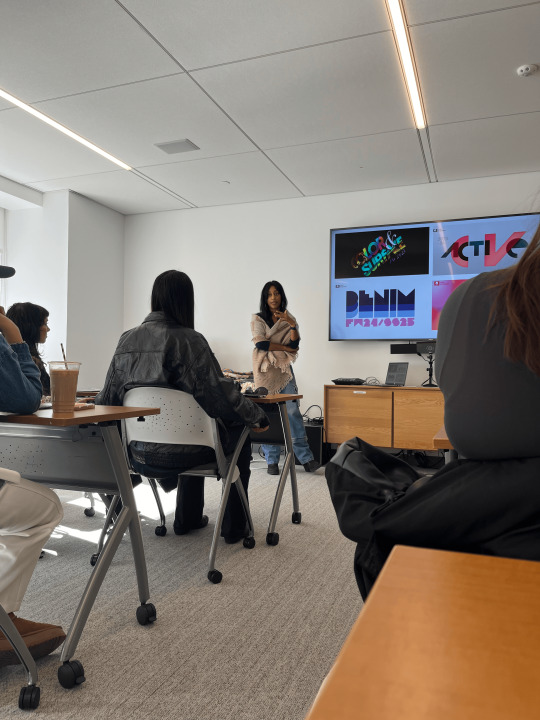
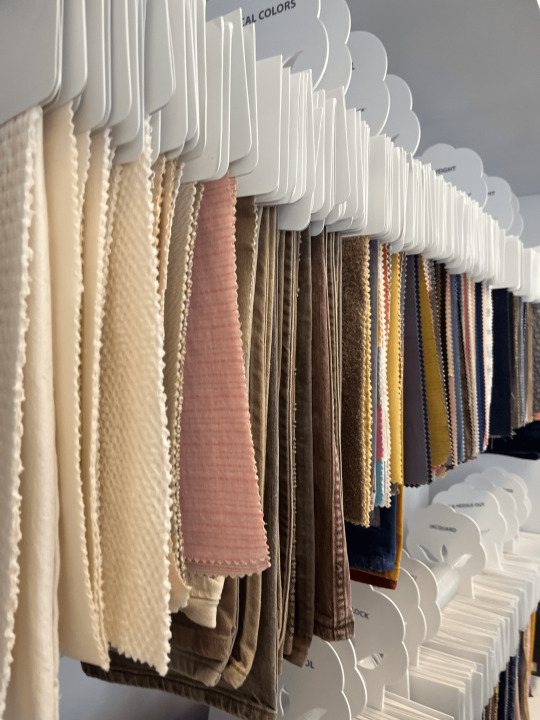
On Thursday, October 17, 2024, our Study Experience for NYC Fashion Students course visited Cotton Incorporated. I wasn’t sure what to expect from the visit; I had seen their commercials but knew little about the company’s background. To prepare, I researched the brand to understand its role in the industry. Founded in 1970, Cotton Incorporated began as a nonprofit organization to support cotton farmers in response to the rising dominance of synthetic fibers. The company focuses on marketing cotton’s qualities to consumers and mills, helping them profit from the material’s unique properties. By encouraging public support for cotton, the company is able to fund textile research and development. Their partnerships with brands allow those companies to leverage Cotton Incorporated’s credibility while creating products that cater to consumer demands based on Cotton Incorporated’s extensive research into cotton varieties. I found it fascinating to learn that Cotton Incorporated is a nonprofit that works closely with cotton farmers.
Our site visit focused on the forecasting research team, and our guide shared insights into their forecasting process and how they communicate predictions to mills. Before this visit, I had no idea that Cotton Incorporated had its own fashion forecasting team. Hearing about their approach to forecasting was a unique opportunity. Our guide explained how her team travels frequently to gather insights, and she had recently visited Asia to collect textile samples that might influence future trends. I asked whether they had ever witnessed traditional crafting methods in these regions, but due to time constraints, they focused on local markets and retailers instead.
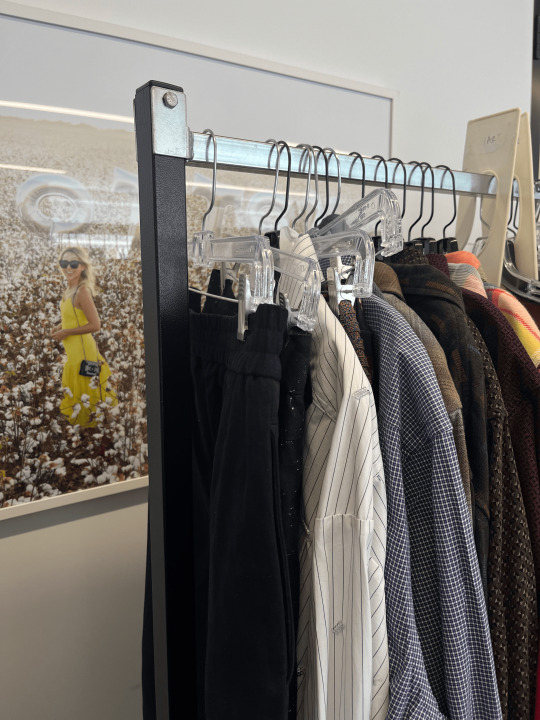
During the presentation, we viewed clothing samples the team had collected from their recent travels, all featuring cotton as a component. One sample that particularly stood out to me was a fuchsia, long-sleeved top with three-dimensional grooves and ridges. I was captivated by its unique hand and drape, unlike any textile I’d felt before. It was made from a blend of cotton and polyester elastomer sourced from Asia. Seeing these garments gave us a global perspective on textiles and fashion, allowing us to step into the forecasters’ shoes and draw conclusions about emerging trends.
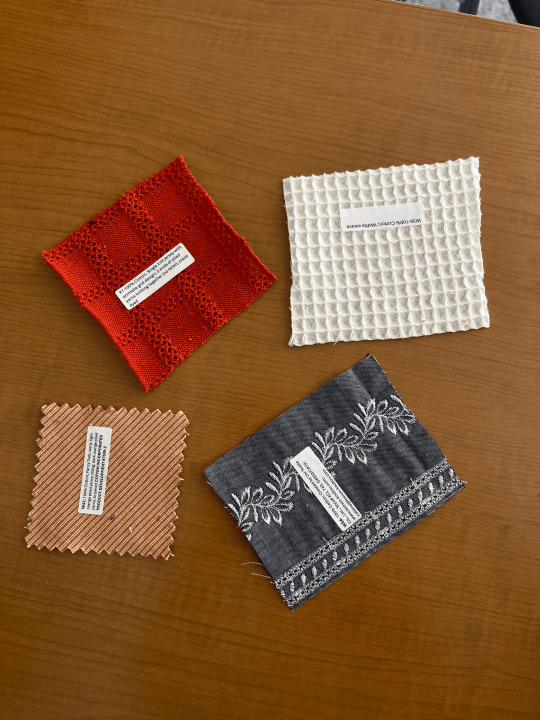
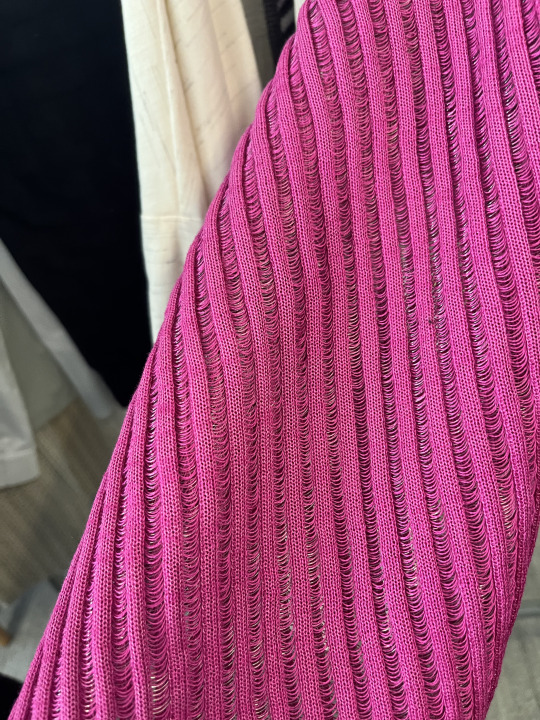
Beyond the samples, we were also shown a presentation on an upcoming trend Cotton Incorporated predicts: making the extraordinary out of the ordinary. The presentation featured color stories and textiles aligned with this theme, all beautifully visualized through imagery. One particularly intriguing aspect was the theme’s nod to “future nostalgia,” which reinterprets past visions of the future, like a microchip dress and Tesla charging stations inspired by retro-futurism. It was fascinating to see how technological innovation, while forward-thinking, often contrasts with the vintage aesthetic of past futuristic predictions.
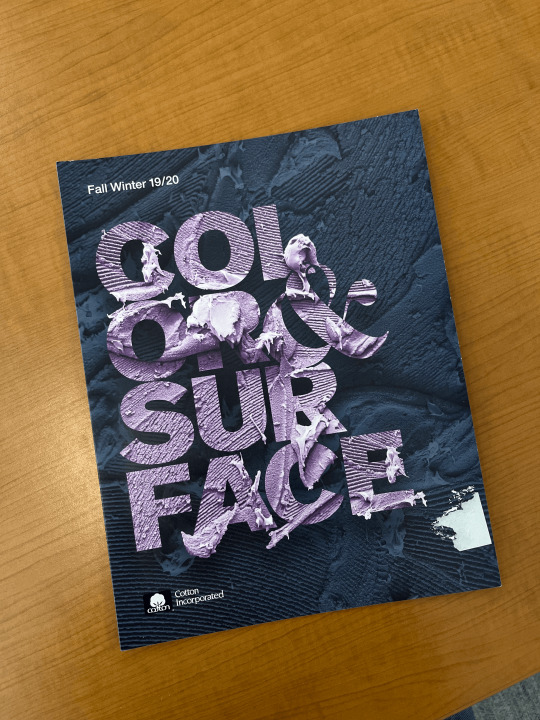
I also had the opportunity to speak with our guide about her career in fashion forecasting. As someone considering a career in this field, I found her insights invaluable. She shared how she applied for Cotton Incorporated’s internship early in her career but was initially turned down. She later gained experience working for a small fashion magazine, and when she reapplied to Cotton Incorporated, her prior experience helped her secure the job. Interestingly, the hiring manager was familiar with the magazine, giving them a point of connection. She encouraged us to consider applying for internships at Cotton Incorporated, which is definitely an opportunity I want to explore further.
Overall, this site visit significantly expanded my knowledge of Cotton Incorporated. I learned how they conduct trend research and predict future fashion trends, and it was exciting to compare their forecasts to those of other companies like WGSN and Doneger, which I’ve previously used. This experience deepened my understanding of how trends are developed and where the future of the fashion industry is headed, and I am grateful for the opportunity to have been part of it.
2 notes
·
View notes
Text




📈 Industry News & Trends: Crafting Boom in 2024 | BlogcraftsNYC
2024 Crafting Trends to Watch: Get Inspired & Stay Ahead
2024 is set to be an exciting year for the craft and DIY industry! With more people embracing creativity and handmade designs, the following trends are set to take over:
Sustainable Crafting: 🌱♻️ As eco-conscious living becomes more widespread, sustainable crafting is on the rise. Expect upcycled materials, eco-friendly dyes, and zero-waste projects to dominate the scene.
Digital Art & Crafts Hybrid: 🎨🖥️ Combining digital tools with traditional crafting methods is revolutionizing the way we create. Think AI-generated patterns or designs paired with hand-painted details.
Bold Colors & Patterns: 🎨🌈 Vibrant, bold color palettes are trending in textiles, pottery, and home décor. From neon threads to geometric designs, 2024 is all about making a statement.
Crafting for Mental Health: 💆♀️🧶 Crafting has been shown to reduce stress and anxiety. Look out for DIY kits focused on mindfulness, relaxation, and self-care in the coming year.
Personalized DIY Kits: 🎁✂️ People love crafting experiences that are tailored to their style. Customizable DIY kits are growing in popularity as a gift idea, especially for holidays and special occasions.
#Crafting2024#arts and crafts#BlogcraftsNYC#DIYTrends#SustainableCrafts#EcoFriendlyCrafts#DigitalCrafting#CraftingForWellbeing#MindfulMaking#BoldCrafts#Handmade2024#PersonalizedDIY#CreativeCommunity#CraftingIdeas#TumblrCrafts#CraftingLove#CraftInspo#CraftingRevolution#EcoArt#ArtForAll#USAHandmade#CreativeTrends#UpcyclingIdeas#MentalHealthCrafts#CraftKits#DIYGifts
2 notes
·
View notes